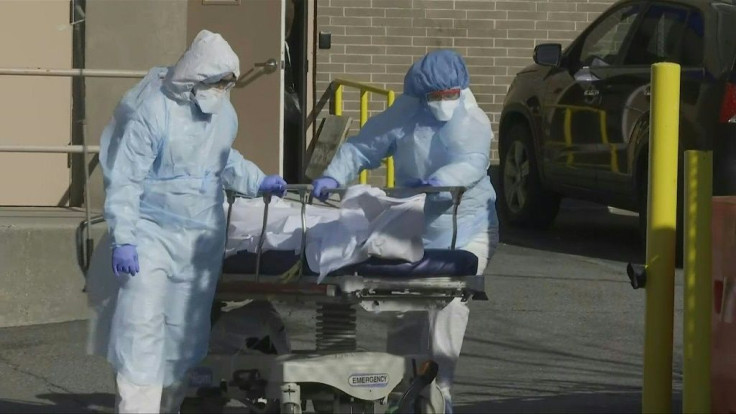US Coronavirus Death Toll To Peak In 3 Days, Total Overall Deaths Drop By 20,000

KEY POINTS
- The IHME statistical model projects up to 30,000 deaths in the remaining weeks of April
- It also predicts 60,000 Americans deaths from February 29 until August 4
- These fatality numbers would have been higher hadn't more Americans than expected followed stay-at-home orders from their states
The good news is there might be far fewer total deaths in the United States by August from COVID-19 than originally predicted. The dreadful news is more than 30,000 Americans might die from the disease from April 12 to 28.
Compare the 30,000 projected deaths to the 15,000 actual deaths from February 29 (the date of the first U.S. death) until April 8, and it seems obvious why health experts are warning the remaining weeks in April will be horrific. Peak death is estimated at 2,212 on April 12, Sunday.
Assumptions based on new data included in the widely referenced statistical model by the Institute for Health Metrics and Evaluation (IHME) at the University of Washington School of Medicine are predicting these new outcomes.
While still frightening, these predictions also represent a welcome decline from the original assumptions revealed to the public on April 2. Social distancing is being seen as the key factor that's kept deaths and casualties from following the path foreseen by the original model.
The latest statistical model slashed the total COVID-19 death toll in the U.S. by 26%. The IHME model now predicts 60,000 Americans will die by August 4, down from the original projection of nearly 82,000 made on April 2.
Nationwide, the model moves the country’s coronavirus death toll apex to Sunday (four days earlier than expected) when 2,212 deaths are projected. The latest predictions confirm the immense value social distancing plays in stemming widespread infections.
It assumes social distancing will continue until August, thereby preventing thousands of deaths than would have otherwise occurred. Social distancing may continue beyond April 30 when the federal guidelines are set to expire in the U.S. Dr. Christopher Murray, an IHME director who also developed the research institute's statistical model, said the consequences for the country might be dire if social distancing measures are relaxed or ignored too soon.
"The US will see greater death tolls, the death peak will be later, the burden on hospitals will be much greater and the economic costs will continue to grow," he pointed out.
The dreadful news in both models is that more than 2,000 Americans might die from the disease everyday from April 12 until April 17. Deaths from April 18 to 28 are projected at more than 1,000 a day. The statistical model predicts at least 30,000 deaths from April 12 until 28.

© Copyright IBTimes 2025. All rights reserved.





















